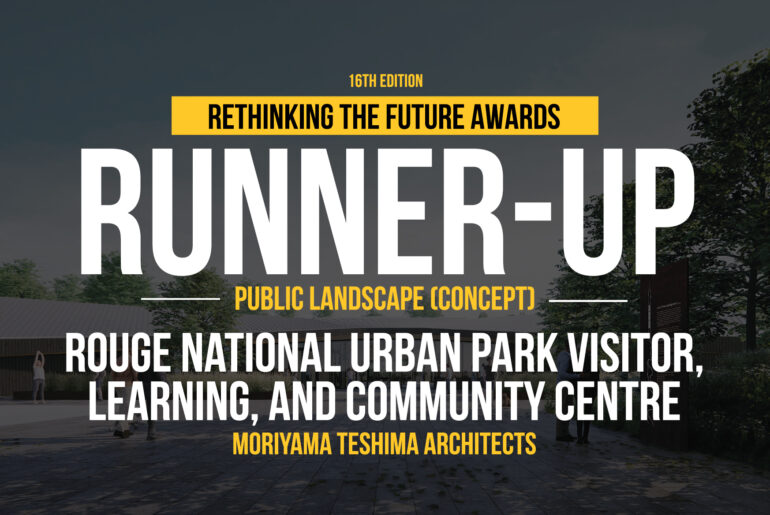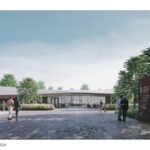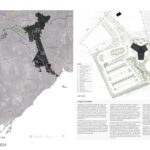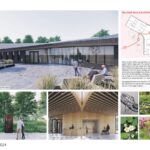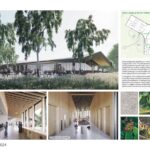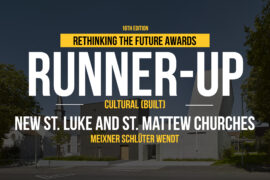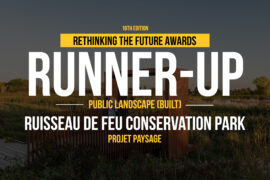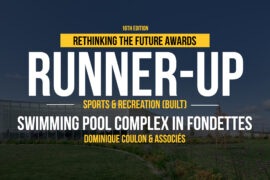Established in 2015 by Parks Canada Agency (PCA), the Rouge National Urban Park (RNUP) is an ecologically protected zone that encompasses much of the Rouge River and Little Rouge Creek valleys.
Rethinking The Future Awards 2024
Third Award | Public Landscape (Concept)
Project Name: Rouge National Urban Park Visitor, Learning, and Community Centre
Studio Name: Moriyama Teshima Architects

At 7,910 hectares, RNUP is the largest urban park in North America and Canada’s first “National Urban Park”. Straddling parts of Toronto, Markham, Durham, and Uxbridge, the RNUP forms a green corridor of forests, farmland, wetlands, ravines, and meadows that connects the Greenbelt to Lake Ontario.
The RNUP Visitor, Learning, and Community Centre will serve as the park’s primary orientation, learning, and events facility where visitors can learn about Rouge’s Indigenous, natural, cultural, and agricultural heritage. As the first visitor centre for this park, PCA wanted to create a new architecture that spoke to the spirit and uniqueness of RNUP, providing a gateway for the 7 million Canadians living within an hour’s drive to the extensive network of national parks across Canada.
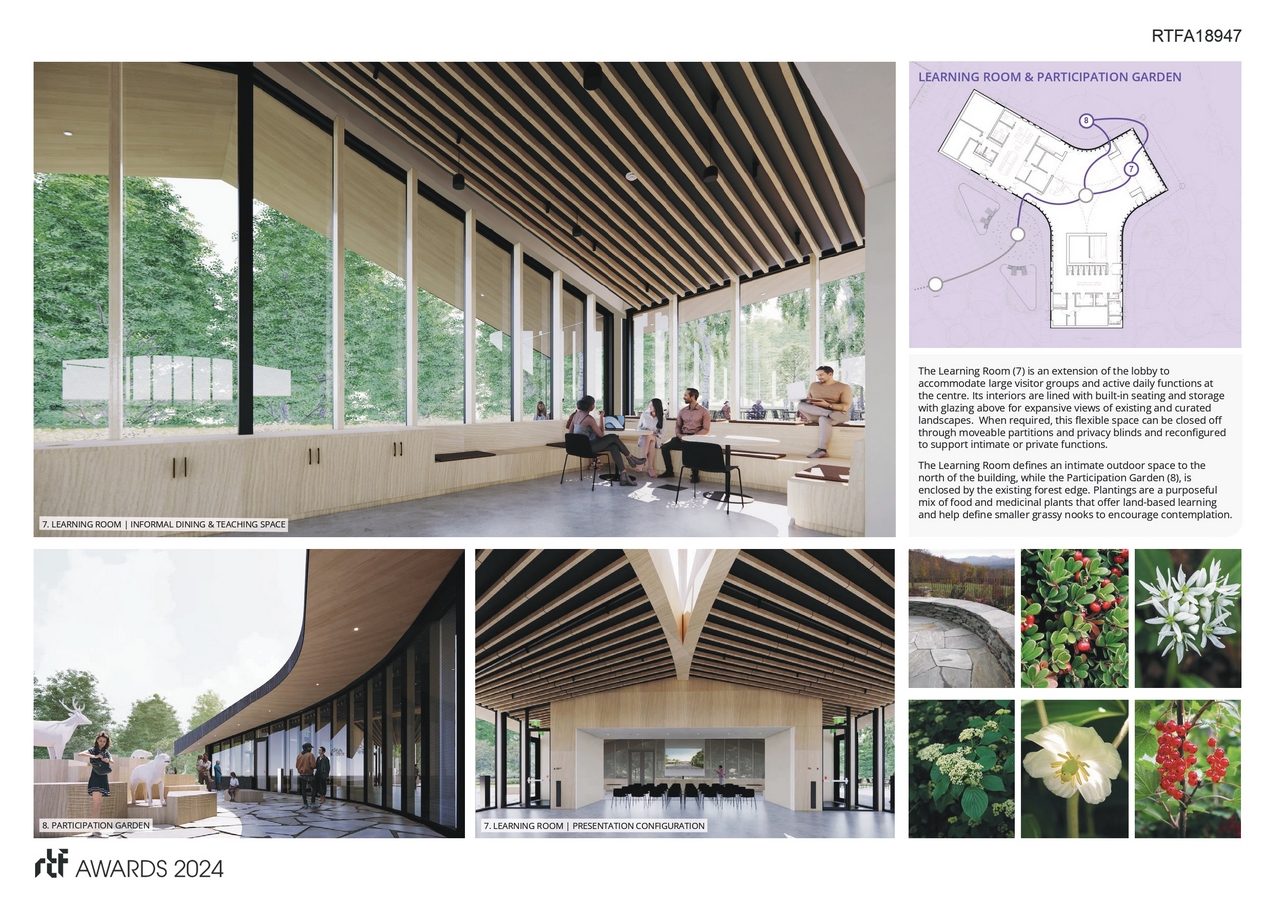
The history of the Rouge has deep ties to Indigenous heritage and includes some of the oldest known Indigenous sites in Canada. The design process included extensive design consultations with the First Nations Advisory Circle (FNAC), comprised of ten Indigenous communities who were historically and/or are currently living in proximity to the RNUP. FNAC expressed a desire for a seamless transition between building and natural elements; “a need to feel feet on the ground and head in the sky”, having the building integrated with the surrounding landscapes.
A central theme of restoration was collectively established with PCA to help guide a unified design narrative between building, landscape, and visitor experience. The implementation of this theme is multifaceted; visitors restore and learn of the natural environment, restore and celebrate the many stories of the land, restore and strengthen a sense of community, and ultimately, restore mind, body, and spirit through reflection, movement, and nourishment. Restoration is not focused only on what was, but what will draw inspiration from the past to ignite the future.
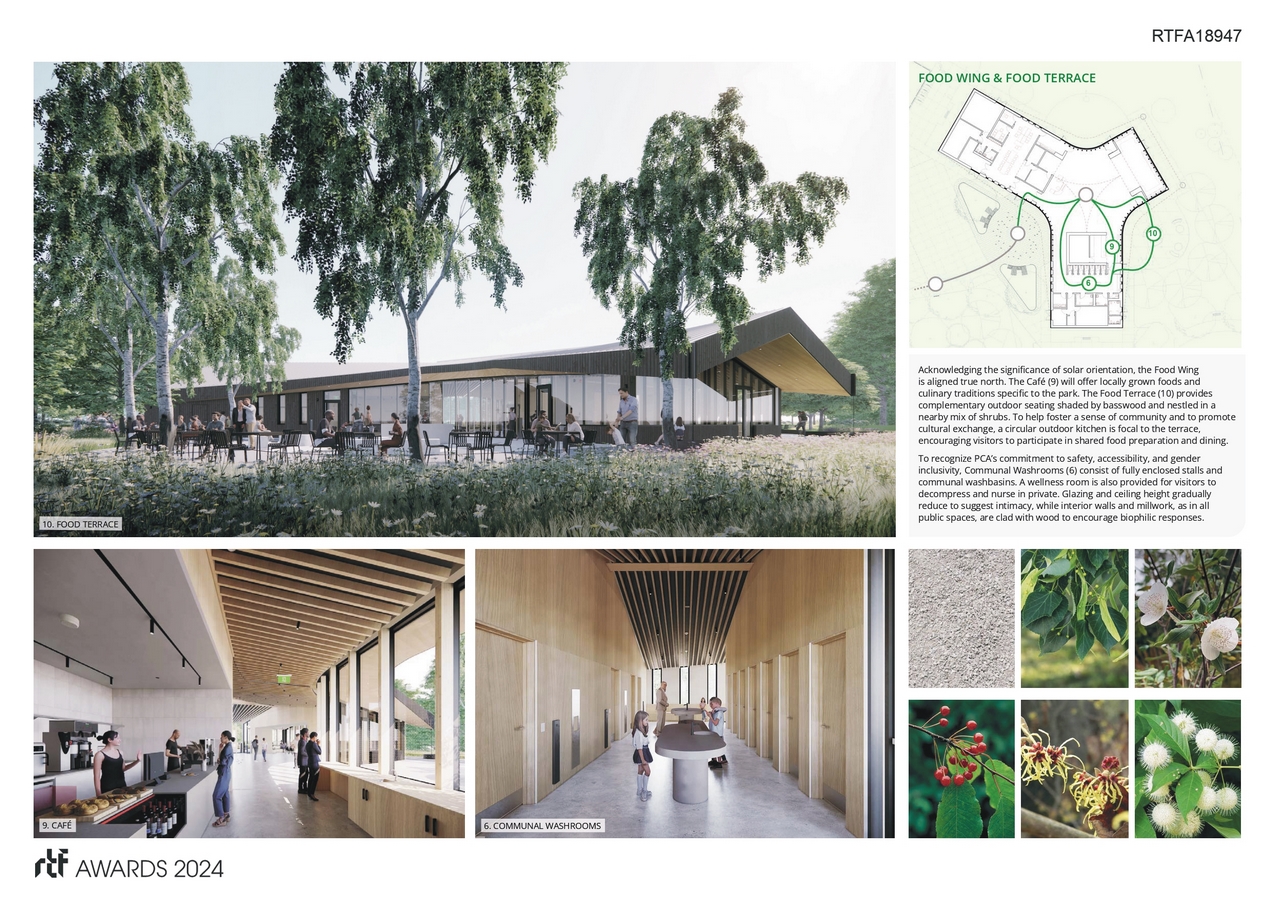
Another guiding theme was the solstice, which holds deep cultural and spiritual significance for all cultures, universally. Summer solstice symbolizes a new season of life; a chance to start fresh and leave past burdens behind. Winter solstice is a time to reflect on the past year; a period to listen to the Elders, share stories, rest, and reconnect with loved ones. Additionally, the solstice bears significant ties to the practice of cultivation at RNUP, guiding agricultural cycles of tilling, sewing, and harvest. Both Indigenous peoples and earlier settlers farmed the land for thousands of years. Today, two thirds of RNUP consists of agricultural land, with a strong community of working farms that practice sustainable food production throughout the year.

The building is oriented to true north; a simple and geometric form of three “spokes” intersect at a skylight opening, connecting visitors to the sky. With feet planted on the ground, the movement of the sun carves traces on the floor, marking the passage of time and its pendulum-like swing between summer and winter solstice.

